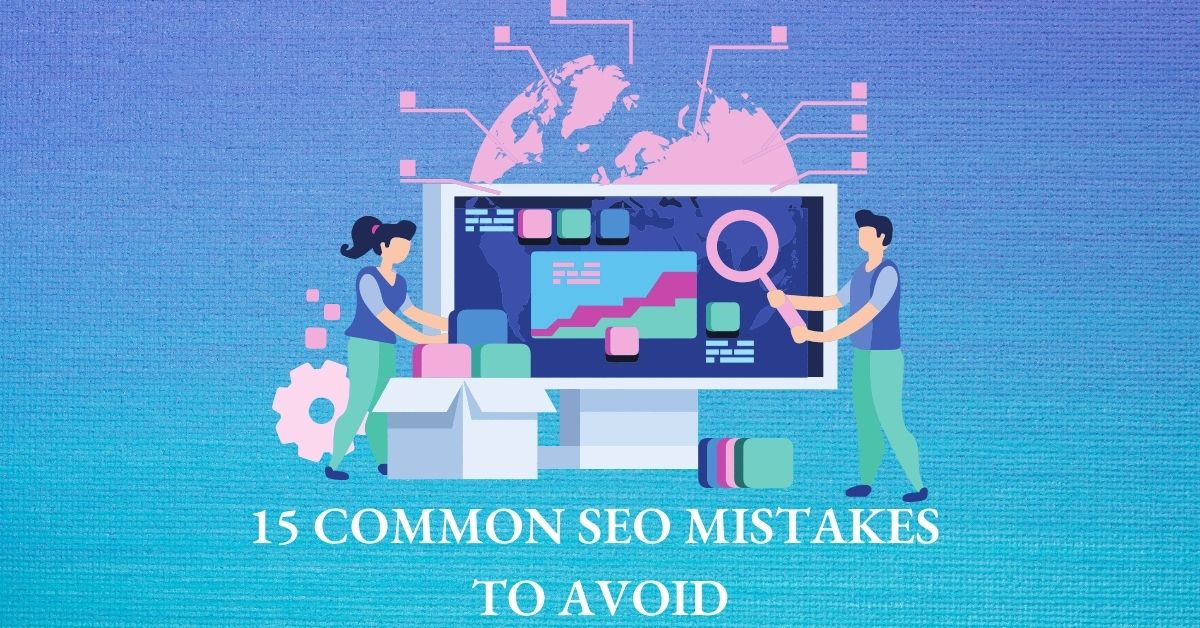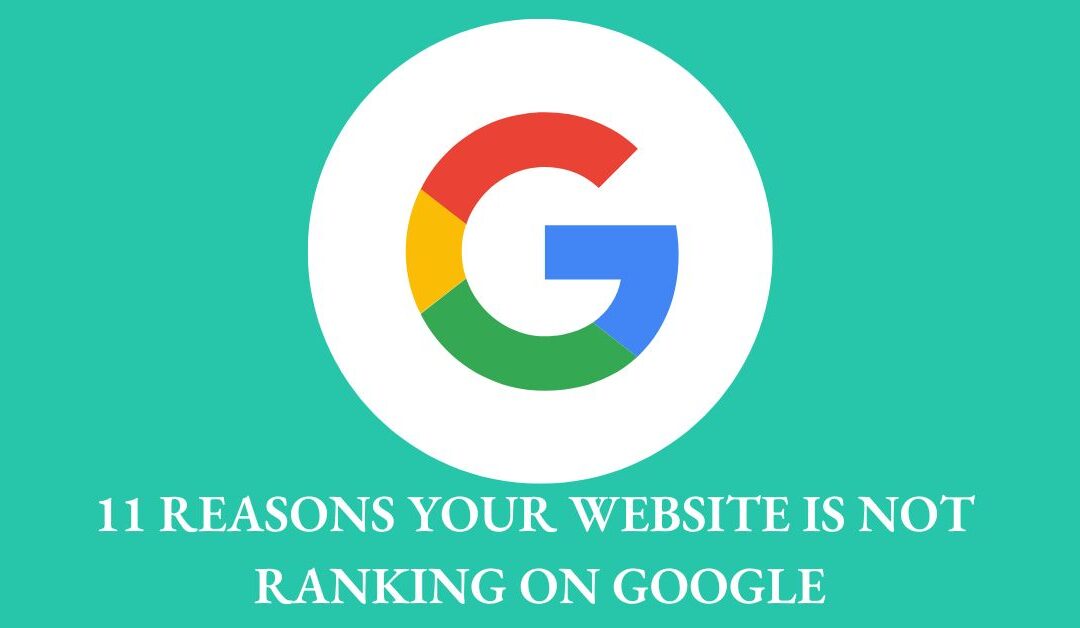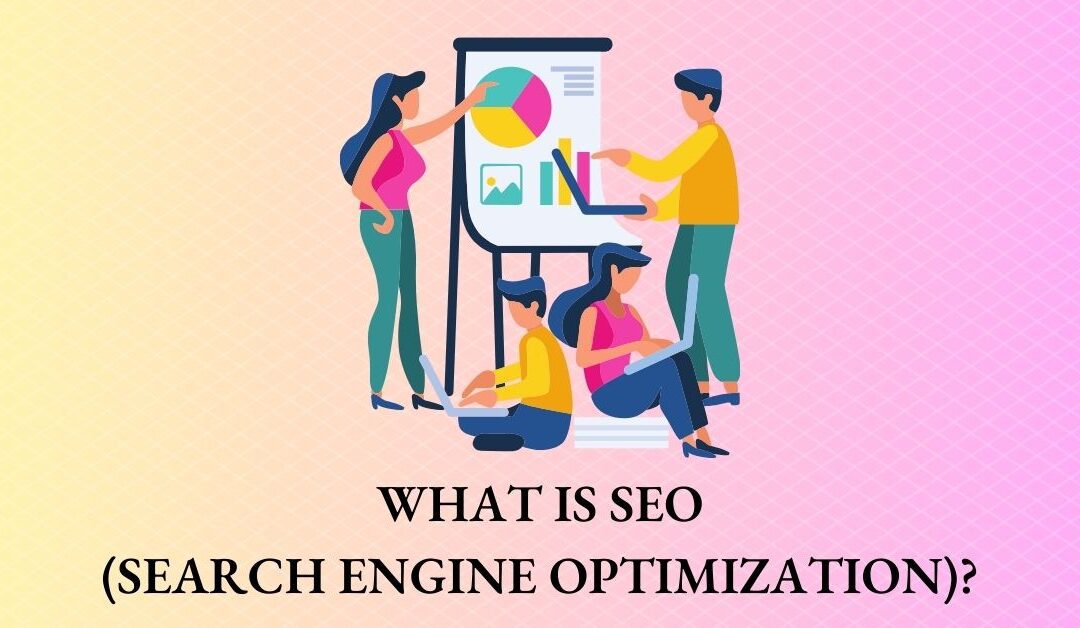Regular changes in search engine algorithms have made it essential to understand SEO for successful digital growth. Whether you are a marketer, an influencer, or have a business online, you can only succeed by optimizing your site for search engines. SEO is an ongoing process that requires practice to master. At first, you may have done everything to optimize your site for ranking higher in Google, Yahoo, or Bing. But in reality, most marketers and website owners cannot make it to the first page of SERPs (search engine page results) even after months. SEO mistakes are why you see no results and do not rank higher. This article will discuss the 15 most common SEO mistakes you should avoid.
Common SEO Mistakes To Avoid
SEO plays a critical role in establishing your position in SERPs. If done right, SEO can boost your ranking. However, certain mistakes can destroy all your efforts and push you down the rankings. Therefore, avoid the following 15 common SEO mistakes to achieve a higher rank in SERPs.
1. Not Using Analytics or Using Wrong Tools
I have known people who spent weeks implementing SEO but paid zero or minimal attention to the regular audits to uncover any SEO mistakes. Analytics is an effective way to discover whether your SEO efforts are working. But using the right SEO tools for tracking and monitoring performance is more critical.
The right tool allows you to improve your SEO strategy. It also gives you insight into competitors’ SEO strategies and uncovers opportunities you may have missed.
Invest in a good all-in-one SEO tool to save time on manual site audits. Many free SEO tools are available but have limitations regarding features and usage.
SEMrush is my favorite SEO tool that offers many features, such as keyword research, on-page SEO audit, competitor analysis, content marketing, content optimization, rank tracking, and link building. Serpstat and SpyFu are two other great SEO tools relatively cheaper than SEMrush.
2. Creating the Wrong Content Type
The wrong type of content is another common SEO mistake. It is crucial to create content according to the audience. If your content fails to provide value to its audience, your audience will switch to one of your competitors.
The most common practices that make your content irrelevant are:
- Multiple topics covered within one piece of writing.
- Targeting multiple keywords in one post.
- Content creation to include keywords.
- Not catering to users’ needs.
- Not answering the target audience’s questions.
- Lack of expertise and authority.
You must select your niche carefully as a first step toward the right content. Each piece of content must reflect your authority as a writer to connect with your audience. You must write to give value to your audience rather than just for the sake of adding keywords.
3. Creating Poor Quality Content
One thing that can fail all your SEO efforts is poor-quality content. Despite all the effort and energy you put into promoting your content, nothing will work if your content lacks quality. To achieve long-term success, you must create high-quality content that will get you a high ranking and increased page views.
Hiring freelance writers for creating content has skyrocketed, while the practice of using article spinners is also at its peak. Article spinners rewrite content from the existing one. But unfortunately, these practices do not provide value to the readers.
I always emphasize the need for high-quality content for SEO and building a loyal customer base. It is unique, original, authoritative, well-researched, engaging, and easy to read.
Google also prefers sites that exhibit E.A.T (expertise, authority, and trustworthiness). Other than E.A.T, the following factors determine the quality of a website:
- The purpose it serves to its audience. The website must provide value to its audience.
- Length of content and its relevance. The content must not only be relevant but also covered in depth.
- Information about content creators. The most credible websites provide information regarding their content creators.
- The reputation of the website, along with its creator.
I recommend using a tool that creates and optimizes content for people and search engines. Surfer is a popular tool for creating and optimizing high-quality, relevant content.
4. Targeting Wrong Keywords
One of the disastrous SEO mistakes is targeting the wrong keywords, such as:
Optimizing for high-volume keywords: Targeting competitive keywords will only make ranking challenging if your website is new. Remember, you are competing against high-domain authority websites with thousands of backlinks.
Optimizing for global keywords when your business is local: For example, if you offer services in Texas, the keyword must include Texas to target the right audience.
Optimizing for generic keywords: Generic keywords attract visitors looking for information but cannot attract potential customers interested in buying. For example, if you are making an SEO tool, “Top 10 SEO tools to try in 2021” will bring in more potential customers than “SEO tools”.
You must have understood that the more specific keywords you use, the better you will rank, leading to a higher conversion rate. Again, it is because the right keywords assure you target the right audiences most likely to convert into customers.
You can use many great tools, such as KWFinder and LongTailPro, to research high-volume long-tail keywords having low competition.
5. Keyword Stuffing
Keyword stuffing is another common SEO mistake that can destroy all your efforts. Excessive keywords in your content would not make your page rank higher in SERPs. Instead, it may hurt your ranking.
Google may also penalize you for keyword stuffing. In the worst case, your page may also get removed.
There are two types of keyword stuffing that you must avoid:
- Visible keyword stuffing, including redundant words, out-of-context keywords, or keywords unrelated to the topic.
- Invisible keyword stuffing, such as repetition of keywords in Meta tags, comment tags, or Html code.
The ideal keyword density for high-quality content is 2%. Keyword density is the percentage of times a particular keyword or phrase appears in the post.
6. Neglecting Content Types Other Than Text
Content that comprises only text leads to higher competition in search engine rankings. But, if your website has multiple content formats, it will be easier for you to achieve higher ranks. Specific content formats rank higher, like infographics and videos.
With multiple content types, you cater to all audiences’ needs, especially those who prefer images and videos over text. As a result, you will attract new audiences and increase retention.
Canva and Visme are popular tools for making attractive images and infographics for higher user engagement.
7. Important Text in Images Rather Than Inside Page Content
Images and infographics are easier to understand and get shared often. However, if you include all the relevant important information in images and explain nothing about it in the text, the search engines would not know about it. Search engines cannot read the text within images or infographics. Therefore, it is critical to include relevant information and keywords in the text for SEO.
8. Duplicate Title Tags and Missing Meta Description
If I point out one SEO mistake that can most affect your business, it is a duplicate title and missing Meta descriptions. Using a unique title and including a Meta description increases your rankings.
I often see websites where page titles are the company or business name. Unfortunately, such titles provide no information about the page.
Similarly, I know many pages with high-quality, relevant content, but their Meta description is missing or lacks the relevant keywords. As a result, the users are less likely to visit the page. The Meta description provides a short description of the page. A well-written persuasive Meta description is critical in deciding if the page has the correct information that the user wants.
9. Old or Outdated Content
Old or outdated content on your site is among the SEO mistakes almost everyone makes. Unfortunately, not everyone knows that removing old or outdated content will improve their ranking.
Outdated content no longer provides value or contains inaccurate information, such as discontinued products, services, or any other time-sensitive information.
Google gives preference to recently published content over old content. It aims to provide its users with the most recent and correct results for its users. Therefore, search engines will pay more attention to your recently published pages if you remove outdated content.
However, update the page rather than remove it if it has several backlinks and generates significant traffic.
10. Ignoring 404 Errors or Broken Links
Most website owners ignore 404 errors and broken links, thinking they do not impact SEO. Although broken links and 404 errors do not affect your search engine ranking, they hurt your SEO efforts in the following ways:
- Page load speed increases as the server tries to locate the page before returning a 404 error.
- Bad user experience.
- It becomes difficult for crawlers to crawl the new page.
- Loss of backlinks linking to the page.
To avoid any potentially damaging effects of 404 errors, you must:
- Update pages instead of removing them.
- Use 301 redirects to take visitors to the new page.
- Contact the websites linking to that page and give them an alternate URL.
11. No Anchor Texts for Internal Links
Most of you must know the importance of internal links from the perspective of SEO. But how many of you use anchor texts for internal links?
Calls to action such as “click here” or “more details here” may help you generate traffic but will not be helpful for SEO.
Anchor text for internal links is essential for SEO as it helps your page rank for relevant keywords. In addition, anchor texts help search engines know what the page is about that you are linking. For example, if the linked page is about SEO tools, you may use the anchor text “SEO tools for higher rank”.
12. Giving More Importance to Quantity of Links over Quality Links
Prioritizing the number of links over their quality is among common SEO mistakes. Although backlinks remain a dominant ranking factor, most website owners ignore the quality of links, which is essential for search engine ranking. Successful backlink building involves targeting valuable backlinks from relevant high-domain authority websites.
Indeed, the quality of links matters rather than the quantity of links. You can get penalized for bad backlinks both algorithmically and manually. Similarly, you may also experience a drop of up to 50% in traffic because of algorithmic downgrading by Google.
If Google penalizes your website, getting rid of it can become time-consuming and tiring. For example, you may have to wait up to 8 months to get rid of an algorithmic downgrade. Whereas with a manual penalty, it may take even longer, up to a year.
13. Buying Backlinks
Many new business or website owners fall into the trap of services that provide backlinks for money. Buying backlinks is strictly against Google Webmaster’s guidelines, and you get penalized if the search engine catches you for purchasing links. Any such penalty will not only kill your ranking, but you will also face serious trouble getting rid of rid.
Below are a few of the many disadvantages of buying backlinks
- You do not control the quality of links.
- Google may not even count them for your page rank.
- A sudden increase in links makes your website suspicious.
- Your site might get deindexed.
- The link may not be sending any traffic to your site.
Lastly, most link sellers generate backlinks from the same websites, and Google can detect them. So if you are thinking about paid links to save time, forget about it and follow backlink-building strategies to earn quality backlinks.
14. No Focus on Mobile-Friendly Experience
Many websites have a fantastic desktop version, but their mobile version needs to be more responsive. A mobile-friendly website is a must after Google switched to mobile-first indexing. It means that Google now ranks websites based on their mobile version rather than the desktop version.
Mobile searches are growing, while around 50% of all traffic comes from mobiles. Therefore, not having a mobile-friendly website means you are losing visitors.
You can use Google’s mobile-friendly test to check whether your site is mobile-friendly. Alternatively, you can test your site performance on your mobile phone. Ensure your site adjusts to every screen size and all buttons work.
15. Slow Page Load Speed
Page load speed is an essential component of SEO, often ignored by website owners. However, it affects your Google ranking, page view, and conversion rates.
A webpage must load within 3 seconds to avoid people leaving it. You can take many steps to improve page speed, such as optimizing images and caching. Or you can use Nitropack, an all-in-one site optimization service that reduces page load time significantly.
Conclusion
SEO requires immense effort and time to make it work for you. Therefore, you must pay special attention to all the aspects that may affect your rankings. However, avoiding common SEO mistakes will save time and help achieve a higher rank in SERPs.






0 Comments